.webp)
How is Contract Management Evolving for the Future?
‘What if managing contracts felt less like a chore and more like having a personal assistant?’
For decades, contracts have been treated like sealed envelopes-drafted, signed, filed away, and forgotten until a dispute or renewal came along. But in today’s fast-paced digitally connected world, that’s no longer enough.
Across industries-finance, healthcare, manufacturing, government, organizations are waking up to a simple truth- contracts are not just legal documents; they’re core business assets. They hold the power to accelerate deal cycles, safeguard compliance, reduce costs, and unlock strategic opportunities, if managed effectively.
The evolution of contract management is not a slow crawl. It’s a rapid transformation powered by technology, shaped by new regulations, and demanded by a business landscape where speed, accuracy, and insight mean survival.
Why is the shift accelerating now?
In today’s world, contact management is not a backhanded process. The mindset is changing rapidly, and the.webp?width=300&height=300&name=Untitled%20design%20(3).webp) transformation is happening faster than ever. The acceleration is not driven by a single factor, but by a convergence of business, technological and regulatory pressures that make modernizing contract management not just an advantage, but a necessity. One of the biggest drivers is the pace of business itself.
transformation is happening faster than ever. The acceleration is not driven by a single factor, but by a convergence of business, technological and regulatory pressures that make modernizing contract management not just an advantage, but a necessity. One of the biggest drivers is the pace of business itself.
Markets move in real time and competitive advantages are fleeting. In this scenario, waiting days or weeks to locate, review and approve contracts is no longer an option. Organizations need contract data at their fingertips to make quick, confident decisions-and that demand has pushed the adoption of intelligent, automated Contract Lifecycle management (CLM) solutions to new heights. Technology itself is also fueling this shift. Artificial intelligence has evolved from a futuristic buzzword to an everyday business tool.
AI: The Game Changer in Contract Management
If there’s one technology leading this transformation, it is Artificial Intelligence.
Generative AI for Pre-Execution speed
Generative AI now drafts low complexity contracts using standard language and smart contracts using standard language and smart defaults, flags risky clauses using pre-set playbooks, and generates concise contract.webp?width=300&height=300&name=Untitled%20design%20(4).webp) summaries tailored for executive or operational teams. This speeds up approvals, improves consistency, and reduces the human errors that often show up in repetitive drafting.
summaries tailored for executive or operational teams. This speeds up approvals, improves consistency, and reduces the human errors that often show up in repetitive drafting.
Extractive AI for Post-Signature Intelligence
Most contractual risks emerge after the deal is signed. Extractive AI pulls key data-renewal dates, compliance clauses, performance metrics-from executed agreements and feeds it into dashboards and analytics tools. This transforms static PDFs into dynamic, searchable and enabling instant tracking of obligations and milestones.
Agentic AI for Autonomy
The future lies in Agentic AI, autonomous systems trained on legal and business data that can independently execute certain tasks, from reviewing and redlining to performing assessments. Multi-LLM architectures ensure adaptability, while historical data analysis supports better negotiation positions. This results in faster deals, stronger compliance, and reduced legal risk.
Security and Compliance: Rising expectations
The digitization wave of the last decade laid the foundation. The next decade will be about trust. Modern SaaS CLM solutions are built with enterprise-grade security to protect sensitive contract data whether it’s in storage, in transit, or being processed.
This includes,
- Granular role-based access so only authorized users can view or edit certain contracts
- Multi-factor authentication to prevent unauthorized entry
- Immutable audit trails to ensure every change is recorded and is verifiable
Compliance is also shifting from reactive to proactive. Advanced CLM platforms can automatically flag contracts that fail to meet ESG commitments, track supplier diversity requirements, or ensure FAR/DFARS clauses are present in U.S. federal contracts.
Integration: Breaking down Silos
Traditional contract management lived in its own corner of the business, disconnected from sales, finance, procurement and operations. That’s no longer sustainable. Today’s CLM platforms must integrate deeply with enterprise ecosystems.
CRM: Sales reps can generate and send contracts without leaving Salesforce or Microsoft Dynamics, accelerating deal closures.
ERP: Finance teams can connect payment schedules, penalties, and renewals directly into SAP or NetSuite.
eSign: Secure, OTP-enabled signing through integrations with DocuSign or Adobe Sign speeds up execution.
ITSM: Legal service requests can be logged and tracked through Jira or ServiceNow, ensuring faster resolutions.
When data flows freely, teams no longer chase missing documents or approvals-everything is visible, searchable, and connected.
What's Shaping Contract Management in 2026?
The future of CLM isn’t just about one or two features, it’s about a complete rethinking of how contracts are handled from creation to renewal.
Intelligent Automation
No more repetitive bottlenecks. Intelligent automation routes contracts for approval based on value, geography, or risk level; sends automatic renewal reminders; and performs real-time compliance checks. One global financial institution cut contract approval times by 30% using automated workflows.
AI-Augmented Decision-Making
Beyond drafting, AI now helps negotiate. Using historical data, it recommends optimal terms, flags potential risks,.webp?width=300&height=300&name=Untitled%20design%20(5).webp) and even suggests alternative clauses based on market conditions. IBM has reported an 80% reduction in contract review times with AI augmentation.
and even suggests alternative clauses based on market conditions. IBM has reported an 80% reduction in contract review times with AI augmentation.
Sustainability Integration
ESG commitments are being written directly into contracts-from carbon neutrality clauses to requirements for ethical sourcing. This is especially powerful for procurement teams managing complex supply chains.
Hyper-Personalized Experiences
One-size-fits-all templates are fading. Hyper-personalization creates clauses, workflows, and approval chains to specific industries, geographies, or even client preferences, improving stakeholder satisfaction and reducing errors.
Advanced Risk Mitigation
Proactive alerts for high-risk clauses or non-compliance give organizations the chance to act before a dispute escalates. Deloitte found a 45% reduction in contract disputes among companies using AI-driven risk monitoring.
Deep Enterprise Integration
Connected systems mean no missed steps, no lost data, and faster decision-making. APIs ensure your CLM talks to your ERP, CRM, procurement tools, and compliance dashboards seamlessly.
Proactive Compliance Updates
Regulations change constantly. Future-ready CLM systems automatically update templates, workflows, and clause libraries to stay compliant, reducing the risk of human oversight.
Looking Ahead: Contracts as Strategic Assets
Imagine a CFO using contract analytics to forecast financial commitments with pinpoint accuracy, or a procurement team leveraging historical supplier performance data embedded in contracts to secure better deals. These scenarios are no longer futuristic dreams; they are already taking shape in forward-thinking enterprises today and that's a sign of significant growth in this field.
For decades, contracts have been treated as the final step in a deal-a safeguard to ensure compliance and a reference point when something went wrong. This new era of contract management is characterized by cross-functional collaboration. Legal, finance, procurement, sales, and operations teams now view contracts as shared resources rather than siloed documents. A procurement officer may examine contract data to renegotiate pricing.webp?width=300&height=300&name=Untitled%20design%20(6).webp) before market costs spike, while a sales team can spot upselling opportunities buried in service agreements. By making contracts accessible and transparent across the organization, companies are turning them into sources of competitive intelligence rather than administrative burdens.
before market costs spike, while a sales team can spot upselling opportunities buried in service agreements. By making contracts accessible and transparent across the organization, companies are turning them into sources of competitive intelligence rather than administrative burdens.
Artificial intelligence and analytics are amplifying this change, enabling real-time monitoring of compliance, performance, and market alignment. Instead of waiting for a quarterly review, organizations can spot deviations or emerging risks instantly. This not only prevents costly oversights but also enables leaders to pivot strategies quickly in response to shifting circumstances. Forward-looking businesses are no longer content to let contracts gather digital dust in storage systems; they are tapping into the wealth of data and insights hidden within them to drive growth, innovation, and competitive advantage.
Looking ahead, contracts will increasingly serve as a company’s intelligence layer-informing not just legal compliance but also strategic planning, partner relationships, and operational agility.
Why Dock 365 is Positioned for the Future
The CLM evolution isn’t theoretical-it’s here, and companies that act now will lead in efficiency, compliance, and agility.
Dock 365’s platform delivers:
- AI-powered drafting, redlining, and clause extraction
- OCR-enabled smart imports for legacy contracts
- Role-based workflow automation
- Fully searchable repositories and visual dashboards
- Seamless integrations with Microsoft 365, ERP, CRM, and eSign platforms
- Enterprise-grade security and compliance tools
By turning contracts into living, intelligent assets, Dock 365 helps organizations not only manage agreements but strategically leverage them for growth.
Conclusion
Contracts are the DNA of modern business. They define partnerships, protect interests, and shape revenue streams. The days of treating them as static records are over.
The future of contract management is intelligent, integrated, and strategic-and it’s already unfolding. Organizations that adopt AI-driven, secure, and deeply connected CLM solutions will move faster, operate smarter, and stay ahead in an increasingly complex world.
In the future, the true value of a contract will be measured not just by the terms on paper but by its ability to guide smarter business decisions. Contracts will be woven into the fabric of enterprise intelligence, integrated with ERP, CRM, and supply chain systems, creating a seamless flow of actionable data across the organization. As this evolution continues, businesses that embrace contracts as strategic assets will gain a decisive edge-turning every agreement from a static obligation into a catalyst for growth and innovation.
The question isn’t whether contract management is evolving, it’s whether you’re evolving with it.
Book a Live demo
Schedule a live demo of Dock 365's Contract Management Software instantly.
.jpg?width=1260&height=1205&name=Image%20(2).jpg)
Written by Fathima Henna M P
As a creative content writer, Fathima Henna crafts content that speaks, connects, and converts. She is a storyteller for brands, turning ideas into words that spark connection and inspire action. With a strong educational foundation in English Language and Literature and years of experience riding the wave of evolving marketing trends, she is interested in creating content for SaaS and IT platforms.


